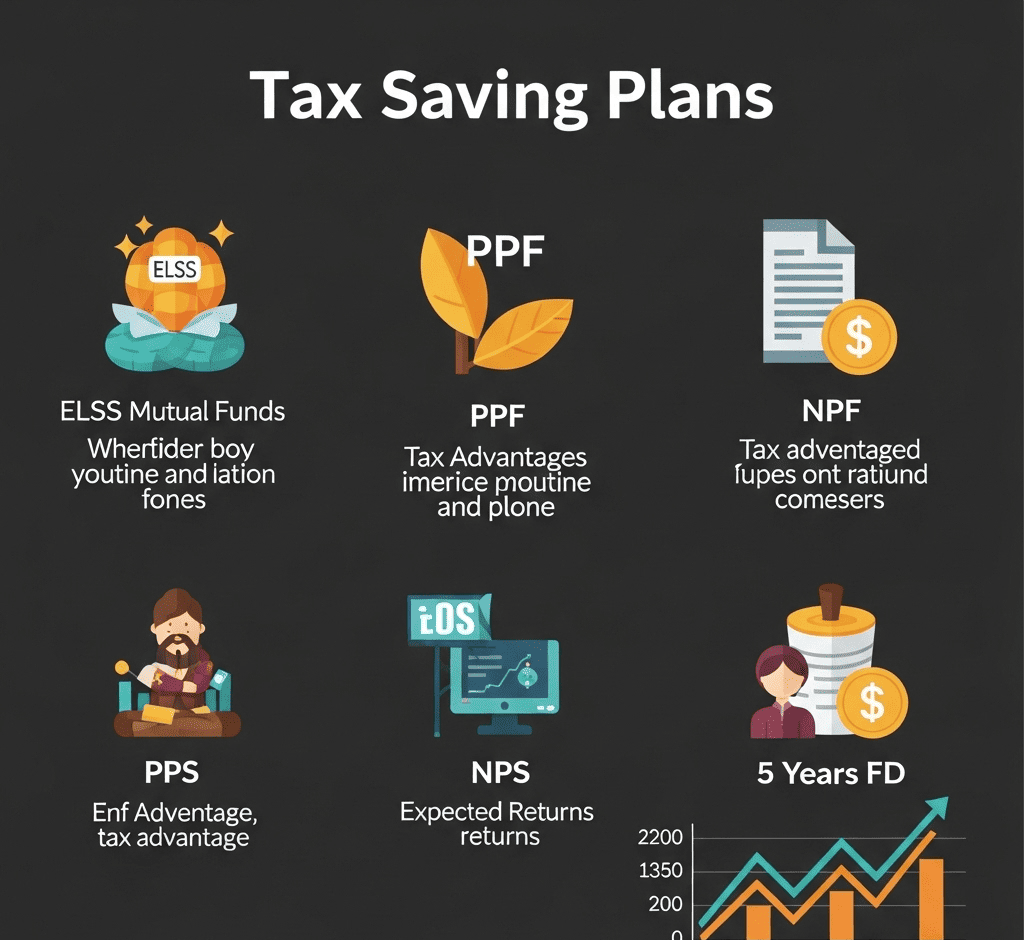Tax saving plans in 2025 offer a range of instruments and strategies to reduce taxable income, primarily under the old tax regime, which allows for several deductions and exemptions. The most popular options include investments under Section 80C, health insurance premiums under Section 80D, and contributions to pension schemes.
Section 80C Investments:
Section 80C remains the cornerstone of tax-saving, permitting deductions up to ₹1.5 lakh per year. Eligible investments include Public Provident Fund (PPF), Equity-Linked Savings Schemes (ELSS), National Savings Certificate (NSC), tax-saving fixed deposits, life insurance premiums, and Sukanya Samriddhi Yojana (SSY). Each of these instruments offers varying lock-in periods, returns, and risk profiles. For example, ELSS funds have a three-year lock-in and provide equity exposure for higher potential returns, while PPF and NSC offer fixed, government-backed returns with longer lock-in periods.
Tax-Saving Fixed Deposits:
Tax-saving FDs offer fixed returns and a five-year lock-in, with the principal amount qualifying for Section 80C deduction. However, interest earned is fully taxable, and premature withdrawals are not permitted, ensuring disciplined savings.
Health Insurance and Other Deductions:
Section 80D allows deductions for health insurance premiums paid for self and family, further reducing taxable income. Additional deductions are available for interest on home loans, contributions to the National Pension System (NPS), and charitable donations under various sections.
Tax Regime Choice:
The 2025 tax structure offers two regimes. The old regime provides extensive deductions and exemptions, making it suitable for those who can maximize these benefits. The new regime, with higher basic exemption and minimal deductions, is ideal for those who prefer simplicity or cannot exhaust deductions.
Additional Plans:
Other notable tax-saving avenues include Unit-Linked Insurance Plans (ULIPs), Senior Citizen Savings Scheme (SCSS), and pension plans, each offering unique benefits and eligibility criteria.
Choosing the right mix of tax-saving plans depends on individual financial goals, risk appetite, and preferred tax regime. Strategic investment in these options not only reduces tax liability but also helps build long-term wealth.

